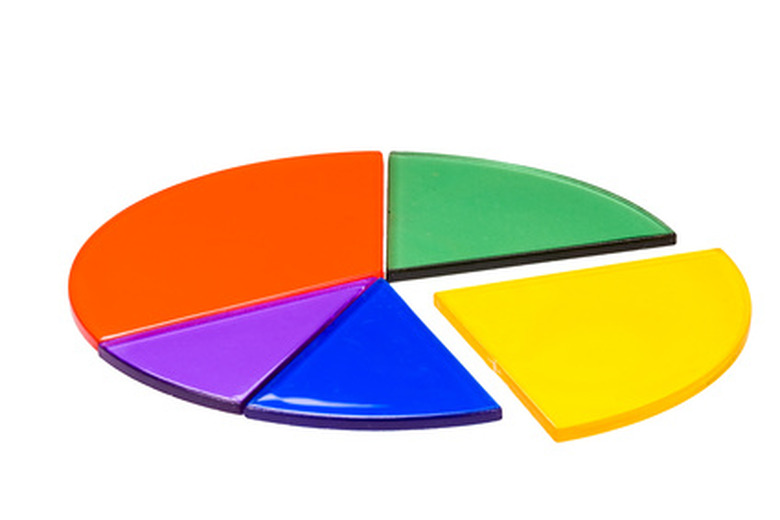How To: Improper Fractions Into Proper Fractions
You already know that proper fractions have numerators smaller than the denominators, such as 1/2, 2/10 or 3/4, making them equal less than 1. The improper fraction has a numerator larger than the denominator. And mixed numbers have a whole number sitting next to a proper fraction — for example, 4 3/6 or 1 1/2. As you work on converting improper fractions, you'll find yourself using your knowledge of division.
Step 1
Write down the improper fraction — for example, 27/6. The fraction bar means you need to divide 27 by 6.
Step 2
Divide 27 by 6. The answer is 4, with a remainder of 3. Use the answer as the whole number part of the mixed number, and place the remainder over the original denominator: 4 3/6.
Step 3
Reduce the fraction, if necessary. For example, 3/6 equals 1/2 (the lowest common denominator of 3 and 6 is 3, so divide both the numerator and the denominator by 3 to reduce the fraction to 1/2).
Cite This Article
MLA
Wyden, Genevieve Van. "How To: Improper Fractions Into Proper Fractions" sciencing.com, https://www.sciencing.com/improper-fractions-proper-fractions-7773901/. 24 April 2017.
APA
Wyden, Genevieve Van. (2017, April 24). How To: Improper Fractions Into Proper Fractions. sciencing.com. Retrieved from https://www.sciencing.com/improper-fractions-proper-fractions-7773901/
Chicago
Wyden, Genevieve Van. How To: Improper Fractions Into Proper Fractions last modified March 24, 2022. https://www.sciencing.com/improper-fractions-proper-fractions-7773901/
